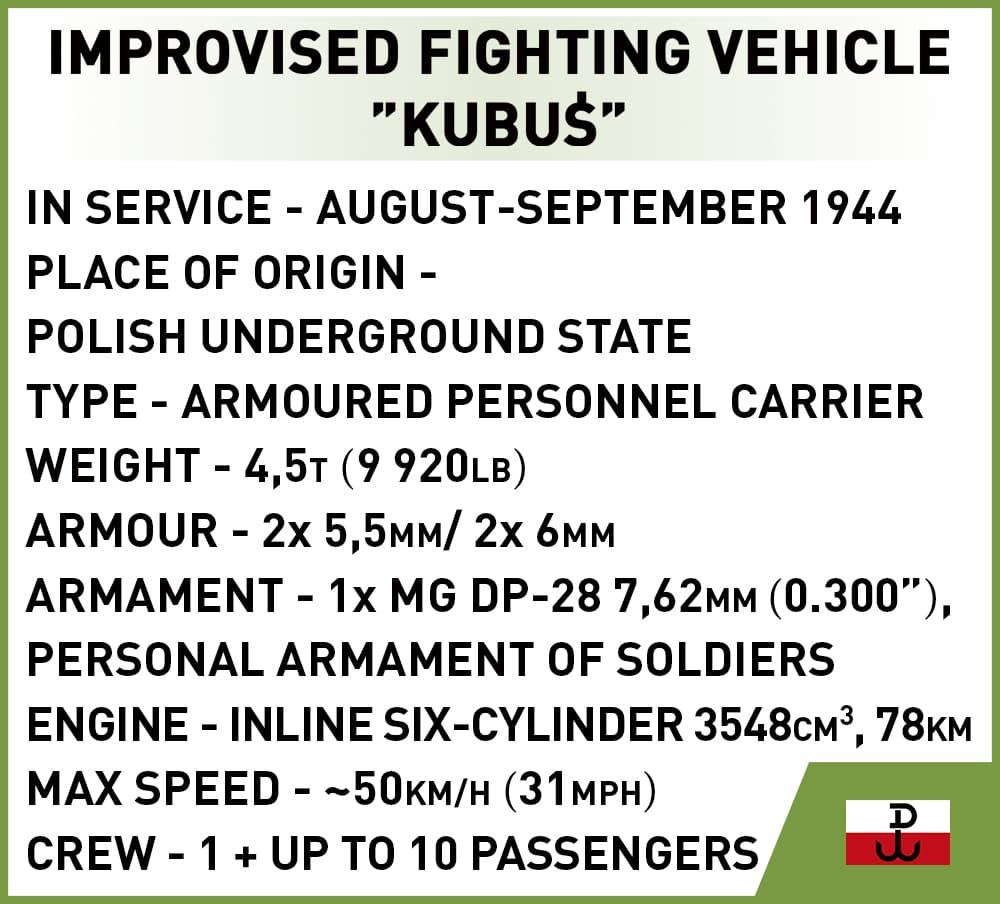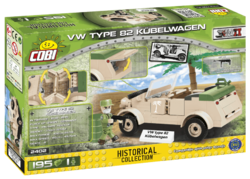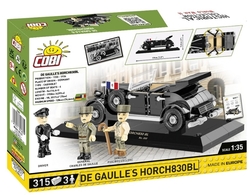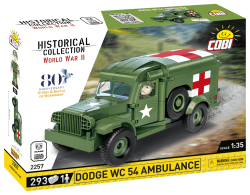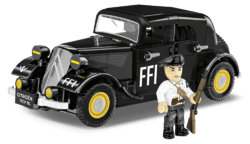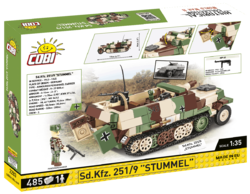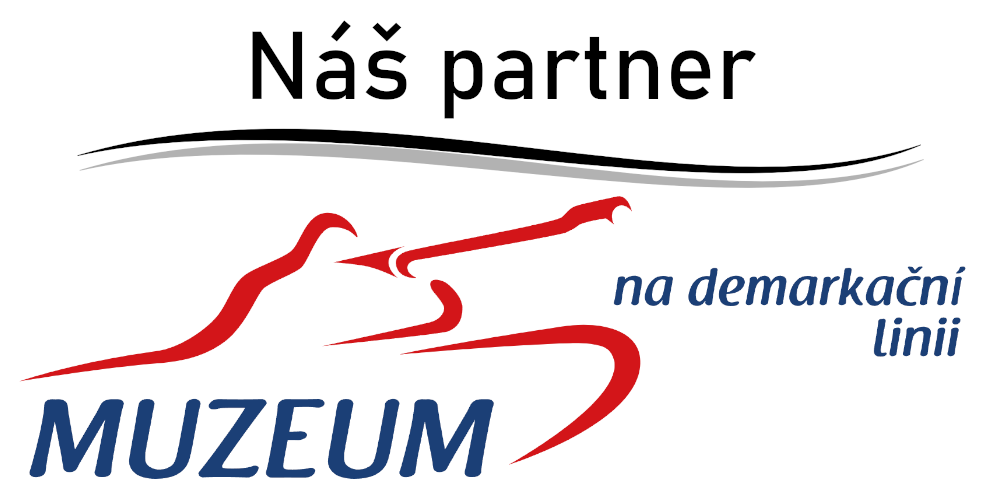Kit of a model of an improvised Polish KUBUŚ armored vehicle from the period of the Warsaw Uprising of 1944. The assembled vehicle in two-tone gray camouflage has an opening top hatch and a DP machine gun mounted on the roof. The package also includes figures of the Zemstá Armády insurgents Wydra and Rafalka from the KRYBAR group.
Show more
0 %
(0 Ranking)
555 Kč
pcs
Add to Cart
In stock - ready to ship (2 pcs)
| List Number: | COBI-3114 |
| EAN: | 5902251031145 |
| Warranty: | 24 months |
| Manufacturer: | COBI |
| Loyalty Points: | 5 |
| Price excluding VAT: | 458,45 Kč |
Description
Parametres
Files and Links
Discussion
Reviews

You know that:
- Construction of the armoured vehicle in occupied Warsaw began on 10 August 1944 under extremely difficult conditions.
- The car was based on the durable Chervrolet 157 chassis obtained from the Powisle Power Station garages.
- Konstruktérem pancéřování byl inženýr Walerian Bielecki, který s vojenskou technikou neměl zkušenosti. Jediným zdrojem informací pro něj byla kniha z roku 1921 s názvem Tank Renault.
- There was a gap of 6 cm between the armour plates. The projectile did penetrate the first layer, but it slowed it down so much that it did not pass through the second layer.
- Sheets from the factory for impregnable cash registers were used for the armouring.
- Light armour protected the crew from small arms fire.
- Getting materials and parts was a superhuman task in a Nazi-occupied city. Any carelessness could lead to disclosure and severe punishment.
- The armoured vehicle was built for the attack on Warsaw University, which took place on 23 August and 2 September.
- KUBUS successfully transported the crew to the intended location, but the size of the enemy group thwarted the attack.
- Eventually the vehicle was destroyed by its own crew on 6 September 1944.
- The original machine can be seen today in the Museum of the Polish Army.
Technical parameters:
- Dimensions: length 6.09 m, width 2.17 m and height 2.52 m
- weight 6 090 kg
- armouring 6 + 5 mm
- main weapon DP-28 machine gun of 7,62 mm calibre
- Power unit Chevrolet 6-cylinder 3.54 l engine with 57.5 kW
- Number of gears 4 forward + 1 reverse
- maximum speed 60 km/h
- fuel tank capacity probably 90 l
- range unknown
- Crew 2 +10
Jan Maninski "Ponury" driver of the vehicle KUBUS:
"When we set off towards the university on 23 August, I felt an adrenaline rush like never before. We came under heavy fire, but KUBUS stuck it out. I saw our fellow soldiers gain new hope. Despite the drumming of bullets on the armor, it was necessary to remain calm. None of us wanted to fail."
Assembly Instructions
| Scale | 1 : 35 |
|---|---|
| Dimensions after assembly | 17,5 x 9 cm |
| Number of figurines | 2 pcs |
| Box dimensions | 27,5 x 20 x 6 cm |
| Number of pieces | 302 pcs |
| Package weight | 395 g |
| Recommended age | 7+ |
| Material | Plastic |
| Collection | World War II |
| Contains luminous blocks | Yes |
| Compatible with other brand of kits | Yes |
Discussion is empty.
There is no review for product yet
Other categories
Last viewed products
You might be interested

















